READY TO GET STARTED?
REQUEST A FREE ESTIMATE
Fill out the form below or call (888) 466-7849 for a free, no-obligation estimate.
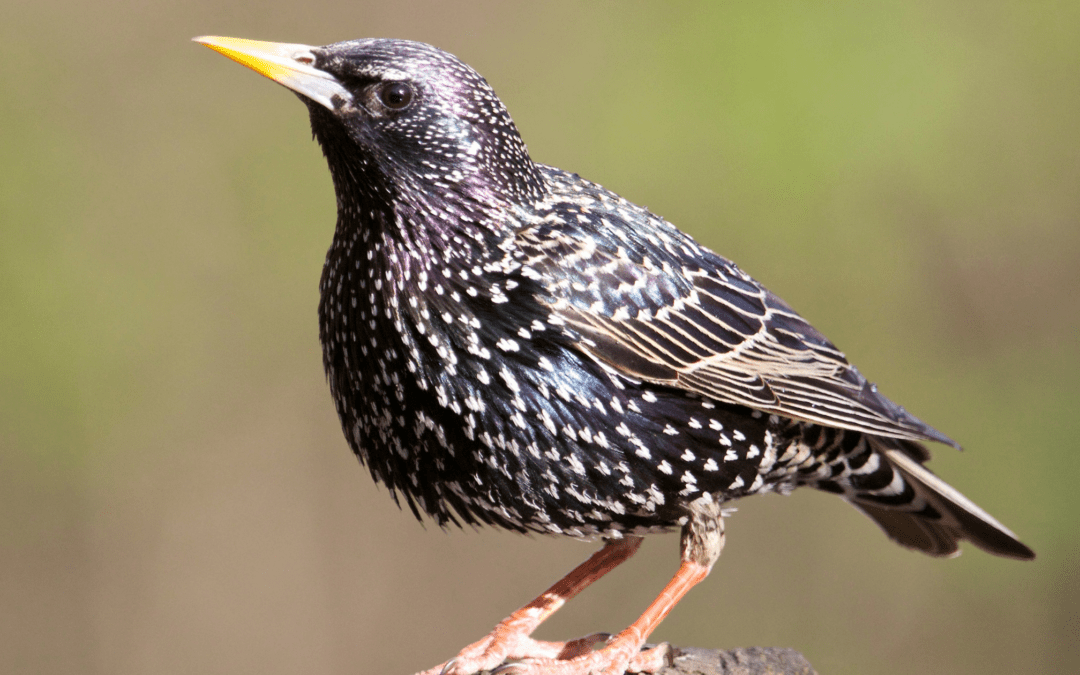
When it comes to pest control, most homeowners think of rodents, insects, or larger wildlife. However, one species of bird, the starling, can cause significant problems for property owners in Georgia. With their large flocks, destructive habits, and invasive nature, starlings have become a nuisance in both urban and rural areas. This blog will explore what starlings are, how to identify them, why they are considered a nuisance, and effective and legal ways to manage their presence around your home.
Starlings, specifically the European starling (Sturnus vulgaris), are small to medium-sized birds that were introduced to North America in the late 19th century. A group of bird enthusiasts, inspired by William Shakespeare’s references to the starling, released 100 of these birds in Central Park, New York, in 1890. What followed was an ecological domino effect that resulted in the species spreading across the entire continent. Today, starlings are classified as an invasive species in the U.S., meaning they compete with native birds and wildlife for resources, often to the detriment of local ecosystems.
Starlings are distinctive birds, making them relatively easy to identify. They have short tails, pointed yellow beaks, and glossy black feathers that shimmer with hints of purple and green in the sunlight. During the winter months, their feathers are speckled with white spots, adding to their recognizable appearance.
They are often seen in large flocks, especially during their breeding season in the spring and early summer. They are incredibly vocal, known for their variety of chirps, whistles, and even mimicking other birds and sounds. If you notice large groups of noisy black birds swarming your yard, you’re likely dealing with these nuisance birds.
Starlings are more than just noisy birds—they can cause significant issues for homeowners and the environment. Here’s why:
Starlings are omnivorous, meaning they eat both plant and animal matter. Their diet includes insects, earthworms, fruits, seeds, and grains. In urban areas, starlings often scavenge for leftover human food, adding to their reputation as a nuisance in populated areas. During the breeding season, their diet shifts to more protein-rich foods like insects, which they feed to their chicks. Their adaptability in diet allows them to thrive in various habitats, from urban areas to farmlands, making them difficult to control.
Given their ability to form large flocks and cause property damage, controlling starling populations can be challenging. Here are some effective and legal methods to reduce starling activity around your home:
The most effective way to deal with starlings is to prevent them from entering your property in the first place. Sealing off vents, chimneys, and other potential nesting sites can stop starlings from setting up nests in your home. Installing bird netting around high-traffic areas such as attics and eaves can deter them from gaining access.
Starlings are known to avoid certain visual and auditory deterrents. Hanging reflective objects like aluminum foil strips or installing bird spikes on ledges can make your home less appealing. You can also use sound machines that play predator calls or distress signals to scare starlings away.
Starlings are opportunistic feeders. Removing easy access to food by securing garbage cans, picking up fallen fruits, and using bird feeders designed to exclude starlings can reduce their presence in your yard.
For more extensive infestations, contacting a wildlife control company that specializes in bird control may be necessary. These professionals can implement more advanced strategies such as trapping or relocating starlings. In some cases, they may even use chemical repellents that are safe for both the birds and your family.
It’s important to note that while starlings are invasive, they are still protected under some federal laws. The Migratory Bird Treaty Act (MBTA), passed in 1918, protects many bird species from being hunted or harmed without a proper permit. However, starlings, along with other invasive species like pigeons and house sparrows, are not afforded the same protections under this law. This means that homeowners and wildlife services can legally take action to reduce starling populations on their property, as long as it is done humanely and within local regulations.
During the breeding season, starlings are especially active as they search for food and nesting sites. This is the time when large flocks can form, and their presence can become overwhelming for homeowners. It’s crucial to take preventive measures before the breeding season begins in the spring. By sealing entry points and removing food sources early, you can prevent starlings from making your home their nesting site.
Starlings, with their adaptability and invasive nature, can pose significant challenges for Georgia homeowners. Their large flocks, property damage, and competition with native species make them a nuisance that requires proactive control methods. By identifying these birds early and implementing exclusion and deterrent strategies, you can reduce the likelihood of a starling infestation. If your starling problem persists, contacting a professional wildlife control company that specializes in bird control can ensure the issue is managed legally and effectively.
Whether you’re dealing with starling flocks or preventing them from nesting in your home, understanding these nuisance birds and taking swift action is key to protecting your property and local wildlife.
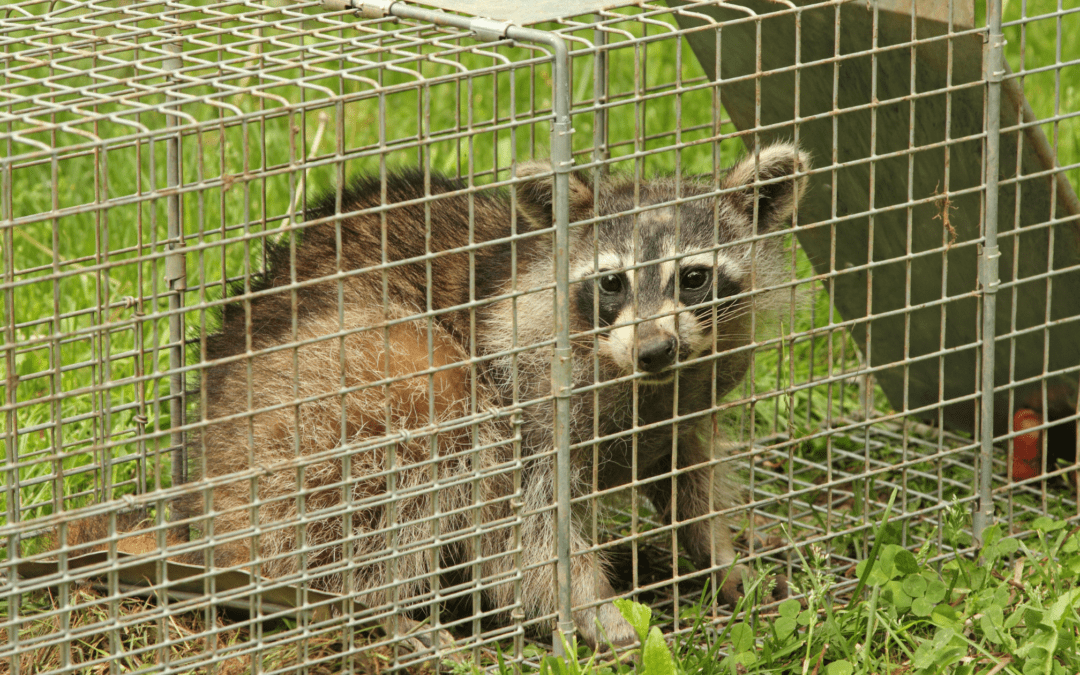
Raccoons, with their curious nature and dexterous paws, are common in Georgia. While these animals can seem harmless, they can cause significant damage to property and pose health risks to humans. If you’re dealing with a raccoon problem, knowing how to trap them safely is essential. One of the key components to successful raccoon trapping is using the right bait. In this blog, we’ll discuss what raccoons like to eat, the dangers they pose, the best baits for raccoon traps, and how to prevent these clever critters from returning.
Raccoons are omnivores with a varied diet. They have a keen sense of smell, which helps them find food in both natural and urban environments. Common foods that attract raccoons include:
When baiting a raccoon trap, you’ll want to use food that will entice them into the trap while also ensuring that it’s positioned correctly to trigger the mechanism.
Though raccoons may appear cute, they can be quite destructive when they enter human spaces. Below are some of the dangers they pose:
Choosing the right bait is crucial for successfully trapping a raccoon. The best bait will be something with a strong smell that appeals to their omnivorous palate. Here are some of the most effective options:
When using a raccoon trap, it’s important to follow safety guidelines. Here are a few tips for effective trapping:
After successfully trapping a raccoon, it’s essential to handle it humanely and safely. In Georgia, there are regulations governing the release of trapped raccoons, so it’s wise to consult a professional wildlife removal company. Professionals can ensure that the raccoon is relocated to a suitable habitat away from residential areas.
Avoid handling the raccoon directly, as they can become aggressive or carry diseases. Most wildlife control companies offer relocation services as part of their raccoon removal programs, providing a humane way to get rid of raccoons.
Once you’ve removed the raccoons from your property, it’s essential to take steps to prevent them from coming back. Here are some effective prevention tips:
Dealing with a raccoon problem can be a challenge, but with the right bait, trap, and preventive measures, you can effectively manage and remove them from your property. If you’re unsure about how to get rid of raccoons or need assistance, working with a professional wildlife control company is the safest and most efficient solution. A trained wildlife removal expert can help you trap raccoons humanely and provide ongoing prevention strategies to keep them from returning. Contact a wildlife removal service today to reclaim your property from these pesky invaders.
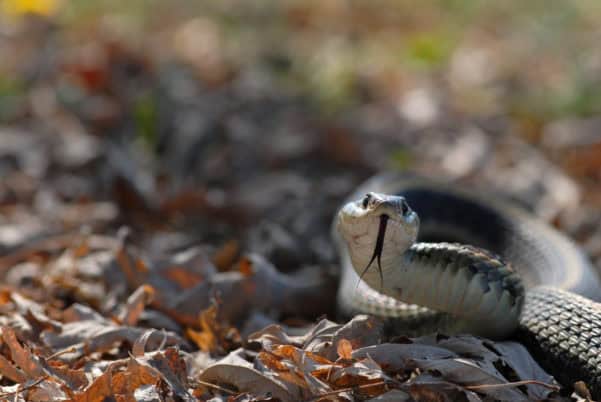
Florida’s beautiful landscapes are home to a wide range of wildlife—including many different types of snakes. While most Florida snake species are harmless and even helpful in controlling pests, spotting one too close to your home can be unsettling. That’s when knowing who to call for snake removal near you becomes important.
Whether you’re looking to identify snakes, prevent them from entering your yard, or deal with an unwanted visitor, this guide covers what you need to know about snake control in South Florida.
Understanding which snakes you might encounter can help you respond appropriately—especially when deciding if professional snake removal services are necessary.
Small and non-venomous, garter snakes have stripes along their bodies and are commonly found in gardens and wooded areas. These snakes pose no threat to humans.
Fast-moving and sleek, these snakes are often seen darting across yards and open fields. Although they may startle you, they’re not venomous and typically flee when approached.
With its distinctive red, yellow, and black banding, this venomous snake is one of Florida’s most dangerous. Coral snakes are reclusive and prefer wooded areas with sandy soil.
Rare in South Florida but worth noting, copperheads have a copper-colored head and hourglass pattern. These snakes are venomous and usually hide near water or under debris.
Large and non-venomous, black pine snakes have dark bodies and light bellies. They favor sandy, forested habitats and help control rodent populations.
While spotting an occasional snake isn’t unusual, you can reduce the chances of them hanging around your home with a few simple strategies:
Snakes love places to hide—tall grass, brush piles, and cluttered landscaping. Mow regularly, trim overgrown bushes, and clear out debris to make your yard less inviting.
Snakes can squeeze through surprisingly small openings. Inspect your fencing and home for gaps or holes, and consider burying your fence a few inches underground to prevent snakes from slithering underneath.
Rodents and insects attract snakes. Keep pet food, bird seed, and trash sealed tightly, and use rodent control measures as needed to eliminate a primary food source.
Certain plants, like marigolds, lemongrass, and garlic, can deter snakes due to their strong scent. Add these to your landscape for a natural line of defense.
Standing water draws insects and amphibians, which in turn lure snakes. Ensure your yard has proper drainage and eliminate any areas where water collects unnecessarily.
Bright lights attract bugs—and bugs attract snakes. Opt for motion-sensor lighting to reduce nighttime insect activity while still keeping your yard safe.
If you discover a snake on your property:
Stay calm and back away slowly
Do not try to trap or kill the snake
Keep pets and children at a safe distance
Call a professional for snake removal near you
Many snakes in Florida are protected, and attempting to remove them yourself—especially dangerous snakes like coral snakes or copperheads—can result in serious injury or legal issues. Let experienced snake pest control experts handle the situation.
If you’re noticing frequent snake activity or suspect a nest nearby, it’s time to call in snake removal services. Wildlife professionals will not only safely remove the snake but also inspect your property, seal up potential entry points, and help create a long-term snake control plan.
Snakes are an important part of our ecosystem—but that doesn’t mean you want them too close to home. If you’re worried about snakes in your yard or home, don’t wait. Our licensed wildlife team offers professional, humane, and reliable snake removal near you in South Florida.
Contact us today to schedule an inspection and get peace of mind with expert snake control services.
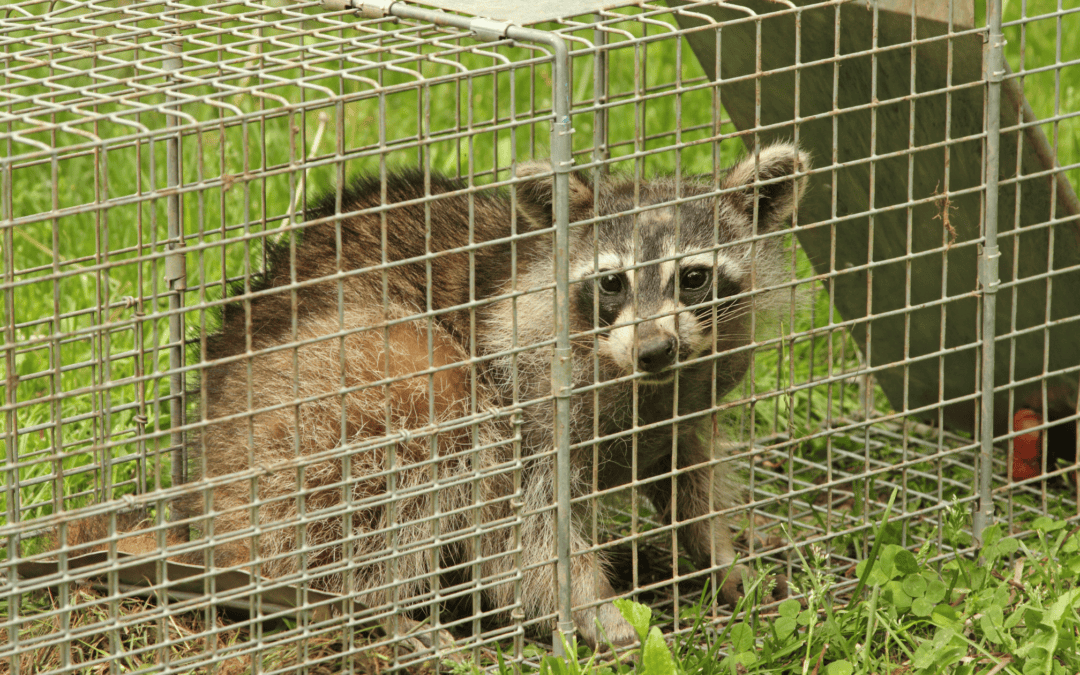
If you live in Georgia, encountering wildlife around your home is common. While Georgia’s rich biodiversity is something to celebrate, it can also bring some challenges, particularly when it comes to raccoons. These nocturnal creatures are intelligent and resourceful, often creating problems for homeowners. In this comprehensive guide, we will explore how to identify raccoons, recognize signs of their presence, understand the types of raccoon traps available, and learn the best bait to use. We’ll also share tips to prevent raccoons from returning to your property.
Raccoons are medium-sized mammals known for their distinctive black “mask” across their eyes and their ringed tails. Here are some key characteristics to help you identify them:
Identifying the presence of raccoons early can help you mitigate any potential damage. Here are some common signs:
There are several types of traps used for raccoon control, but live traps are the most common and humane method. Here’s a look at the different types:
Choosing the right bait is crucial for successfully trapping raccoons. Here are some effective bait options:
Setting a raccoon trap requires some preparation and knowledge. Follow these steps for the best results:
After successfully trapping and removing raccoons, take steps to prevent them from coming back:
While trapping and preventing raccoons can often be managed on your own, there are situations where it’s best to call a professional wildlife control company:
Raccoons can be a challenging nuisance for homeowners in Georgia, but with the right knowledge and tools, you can effectively manage and prevent these wildlife intrusions. Identifying the presence of raccoons early, using the right traps and bait, and taking preventive measures are key steps in successful raccoon control. Remember, if the situation becomes too complex or risky, don’t hesitate to contact a professional wildlife control company. Their expertise and experience can help ensure your home remains raccoon-free and your family stays safe.
By following this comprehensive guide, you’ll be well-equipped to handle raccoon issues and maintain a peaceful, wildlife-free home environment. Happy trapping!
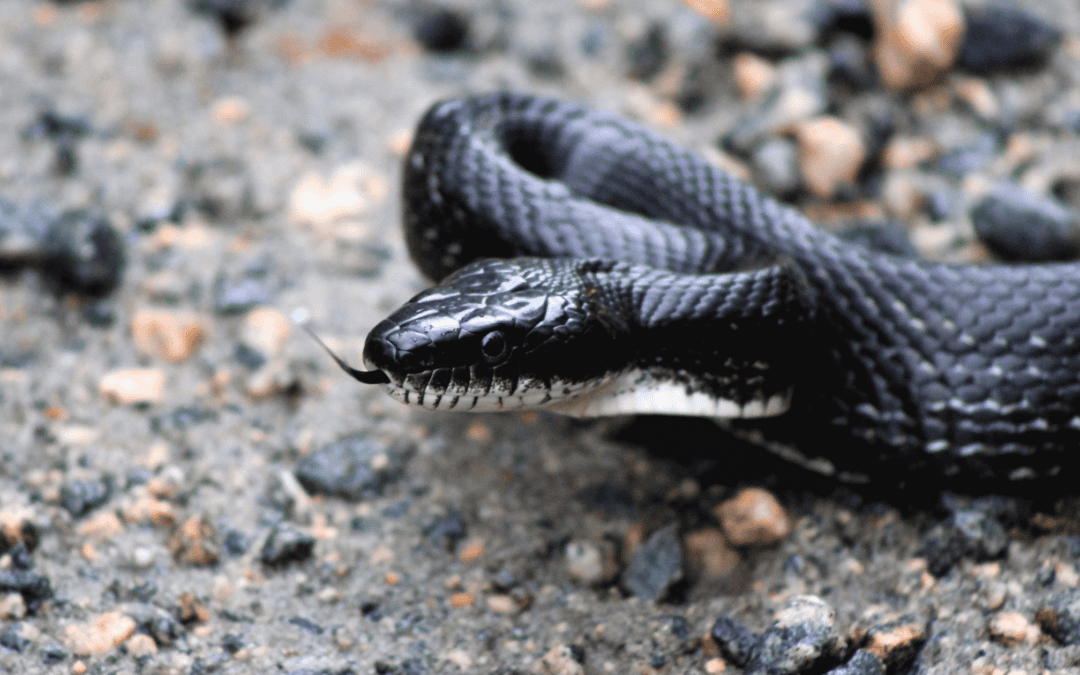
If you live in Georgia, you know that the state’s warm climate and diverse ecosystems are home to a variety of wildlife, including snakes. Encountering a snake in your yard or home can be unsettling, but knowing how to handle the situation safely is crucial. This guide will provide you with essential information on what to do if you come across a snake, how to identify venomous and nonvenomous snakes in Georgia, how to practice safe snake removal, and prevent snakes from entering your property.
Georgia is home to both venomous and nonvenomous snakes. Here are key identifiers:
If you’re dealing with a snake problem and need professional help, search for “snake removal near me” to find a trusted wildlife control company in your area. These experts can safely and humanely remove snakes from your property and provide advice on preventing future encounters.
Encountering a snake can be a frightening experience, but with the right knowledge and precautions, you can handle the situation safely. Remember to stay calm, keep your distance, and contact professionals for help with snake removal. By taking steps to prevent snakes from entering your property, you can reduce the likelihood of future encounters. Stay vigilant, and don’t hesitate to reach out to wildlife control companies for expert assistance in managing your snake problem.